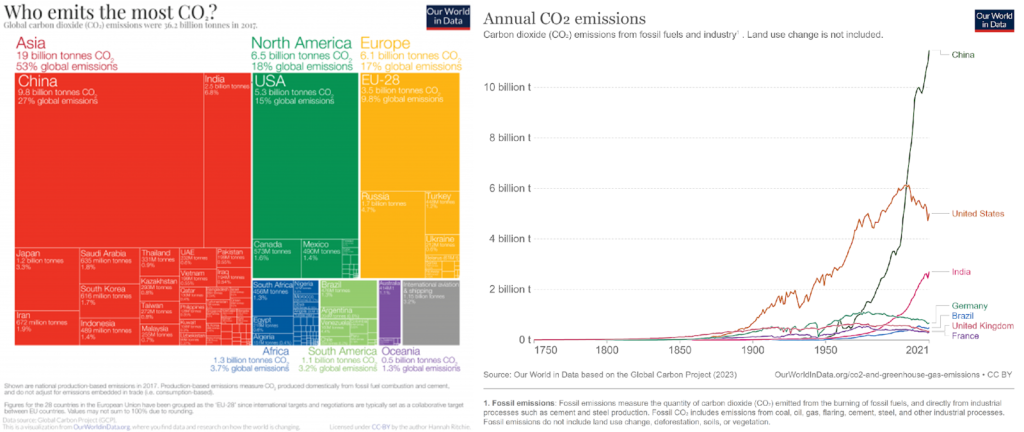Big problems require big solutions, and addressing the amount of carbon in our atmosphere is no exception. It is truly global in scale, with both significant investments and substantial economic impact an expectation whether we choose to work toward a solution or sit idle and see what happens.
We obviously don’t yet have a solution for greenhouse gases (GHGs); we can barely agree on which potential solutions are worth discussing. Carbon-pricing models have the allure of incentivizing a market-driven solution, but they are still in their early stages and it remains to be seen how widely they are adopted. Technology solutions, like direct air capture, are showing promise, and hopes are high. But even if the technology is able to effect meaningful reductions, scalability and the economics of implementation are daunting hurdles.
Strategies for reducing carbon emissions at the source are often regulation-driven, especially when they are large-scale. These tend to garner the most scrutiny, and loudest disagreements, as the net benefits are balanced against the cost, and the weight of regulatory cost is a burden often disproportionally shared. Nevertheless, regulatory action around ESG issues is increasingly a part of the U.S. political landscape.
The Power Plant Rule
A proposed EPA rule targeting the power-generation sector is perhaps the most significant regulatory attempt to curb emissions in the U.S. to date. It mandates that most fossil-fuel fired power plants in the U.S., with some variability based on the size of the plant and the fuel used, achieve roughly 90-percent reductions in their emissions by the year 2038.
The rule is written in a way that the EPA says will meet the requirements of the Supreme Court’s West Virginia v the EPA ruling from last year, though it is still likely to face legal challenges. Structured in parts, it details emissions limits and compliance timelines for different types of plants based on size, age, and primary fuel type. Plants would generally achieve these reductions through installation of carbon-capture technology and the usage of hydrogen as a fuel source.
The EPA estimates that the rule would avoid 617 million metric tons of emissions by 2042, and an additional 214-407 million metric tons avoided under proposed rules for existing gas-fired combustion turbines, also by 2042. It further estimates that this would result in a net gain of as much as $85B over that time period from things like fewer deaths, less medical attention required from improved health, and related productivity.
What it will Cost
Meeting the EPA’s massive emissions reduction targets will require a similarly massive cost. According to EPA estimates, power companies will spend about $10B total to install the technology needed to meet the new guidelines. Carbon capture technology is expensive, though, not just to install, but along the supply chain, and industry estimates are significantly more than the EPA’s figure.
There are other potential pitfalls with the technology. Both carbon capture and hydrogen-firing in power plants have yet to be proven to work at scale, and there is no model to determine how much they would cost over time. Further, the process for using hydrogen is complex, and can produce more carbon emissions than it saves. Wind, solar, and other renewables can be used to manufacture the hydrogen but they are unreliable for electricity production and expensive to build and maintain.
There will almost certainly be a direct cost increase on people’s electricity bills. EPA analysis estimates a 2 percent overall price increase in electricity, and a 9 percent increase in natural gas. Industry analysts disagree, calling the rule “aspirational policy” and citing the number of coal-fired power plants that will likely close rather than attempt to meet the guidelines due to the cost of implementation. In fact, the EPA analysis seems to agree on that point, predicting 0 power generated from coal plants without carbon capture technology by 35.

Currently, roughly 60 percent of electricity in the U.S. comes from fossil-fuel fired power plants, the majority of which use natural gas as fuel, for about 38 percent of all U.S. electricity generation. Coal is the next biggest single source of electricity, providing about 22 percent of our electricity. In contrast, wind and solar combined account for roughly 15 percent of U.S. electricity. Emissions reductions this vast cover a similarly large portion of the power grid, and replacing existing plants with unreliable or unpredictable energy sources would be harmful to a lot of people.
Perspective on Impact
In absolute terms, the rule is ambitious, but it delivers. Preventing a billion metric tons of GHG emissions annually is roughly the equivalent of eliminating the exhaust from well over half of all cars on the road in the U.S. today. To put that in perspective, the U.S. is responsible for about 5.3 billion tons of GHG emissions each year, or roughly 15 percent of global emissions. Decreasing that by a billion would result in a nearly 3 percentage point reduction in annual emission by the U.S. relative to the rest of the world.
But the rest of the world can quickly negate the positive gains from this rule. China, India, and even the U.S. military emit vast quantities of GHGs. China, in particular, is not only the world’s leading polluter, but supplies its enormous energy appetite by building coal power plants. This led to China accounting for nearly all the increase in global emission from the power sector between 2019 and 2021.

Even within the U.S., power plants are not the single largest source of emissions. Rather, that distinction is held by the transportation sector. If this rule is adopted and implemented successfully, it will not directly reduce emissions from cars, the biggest source. Of course, electric cars right now do not provide much net benefit in terms of emissions, as they rely on electricity from fossil-fuel fired power plants. This rule would make the net impact of driving electric cars more significant. And the Biden administration seems to be targeting cars next.

Is the Juice Worth the Squeeze
The yelling, lobbying, posturing, and politicizing on this one has, predictably, increased in volume with proponents and opponents reciting talking points and heralding the issues that matter to them while ignoring concerns from the other side, at least in the public forum. Objectivity left the building long ago.
Fortunately, most people are interested in objective data and analysis, and it is available. The overall reduction in annual emissions is substantial. It is a huge amount on an absolute basis, relative to the U.S. total emissions, and even registering relative to total global emissions. It is not a singular solution for the problem of atmospheric carbon, but it is a significant step in that direction. Beyond the actual reduction of emissions, success in an initiative such as this can provide motivation to look for other ways to make meaningful emissions reductions. It can give other countries a blueprint if they are looking to enact similar policies, and ultimately result in far more substantial emissions reductions over time.
It is expensive, though. The EPA estimates $85B in net savings, but the health and pollution benefits it relies on to make that estimation are difficult to quantify in real-world settings, and nearly impossible to predict realistically. Ignoring that figure, the EPA’s other estimate is $10B direct investment to make the technological transition needed to implement the rule. If this figure held true, then the total cost would seem relatively small compared to the eventual return.
This figure is likely low. The EPA cannot predict mishaps and technology failures. The prediction relies on the ability of the industry to adopt these technologies effectively at scale and scope, while cost decreases over time. Meanwhile, wind and solar make up much of the power generation sources for coal plants that shut down, and they have yet to prove reliable or cost effective, and come with a ton of problems themselves.
However, even at five times the EPA’s estimated cost, a nearly 3 percentage point reduction in global emissions is an eye-opening figure, and there are environmental activists who would likely make that argument at ten or even twenty times the predicted cost. While industry can defray some of the cost using provisions in the Inflation Reduction Act, most of the additional costs would likely end up passed to consumers, who are likely to view increasing electricity bills coupled with a less reliable power grid unfavorably.
The rule is currently available for public comment until July 24.




